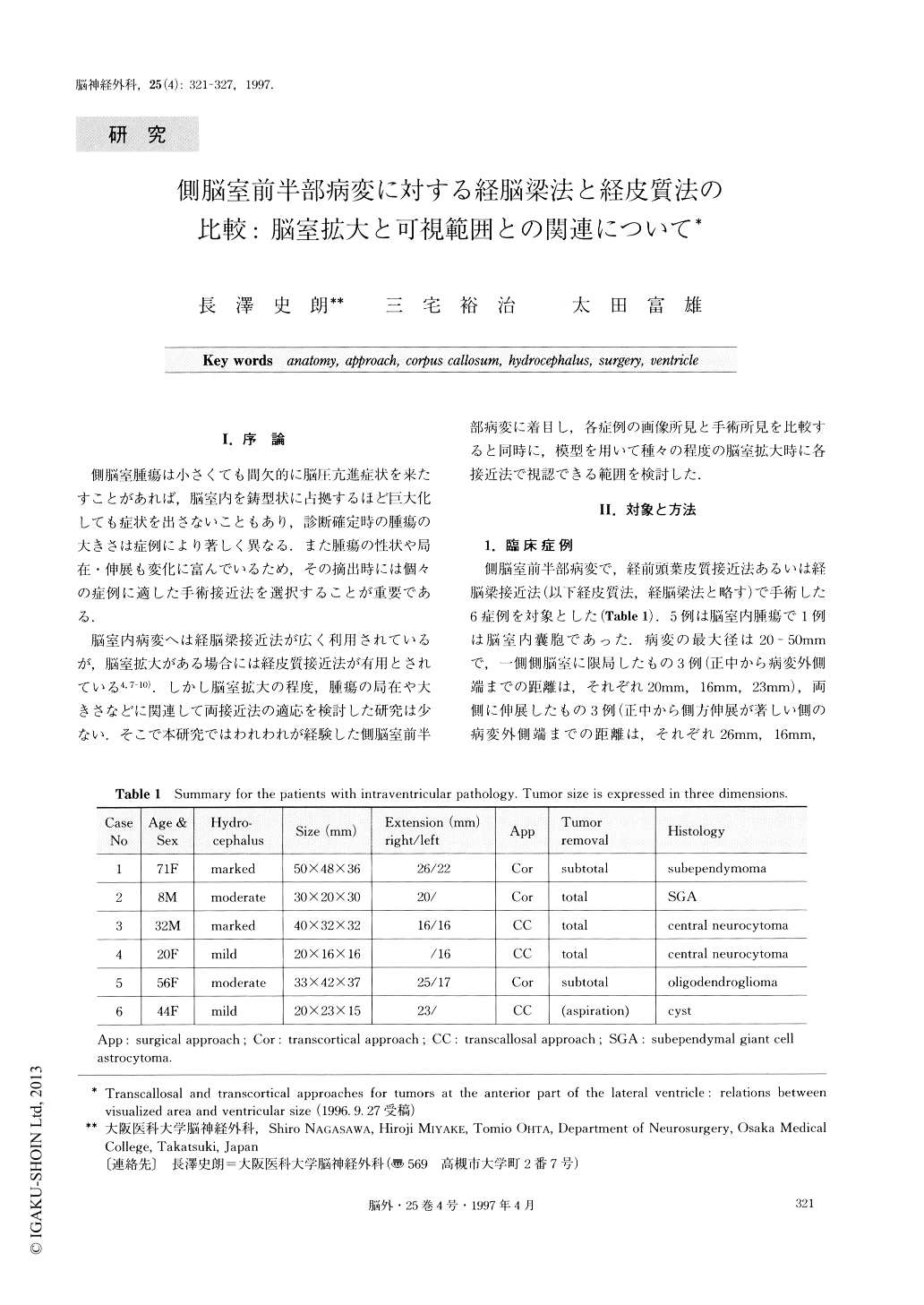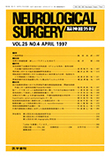Japanese
English
- 有料閲覧
- Abstract 文献概要
- 1ページ目 Look Inside
I.序論
側脳室腫瘍は小さくても間欠的に脳圧亢進症状を来たすことがあれば,脳室内を鋳型状に占拠するほど巨大化しても症状を出さないこともあり,診断確定時の腫瘍の大きさは症例により著しく異なる.また腫瘍の性状や局在・伸展も変化に富んでいるため,その摘出時には個々の症例に適した手術接近法を選択することが重要である.
脳室内病変へは経脳梁接近法が広く利用されているが,脳室拡大がある場合には経皮質接近法が有用とされている4,7-10).しかし脳室拡大の程度,腫瘍の局在や大きさなどに関連して両接近法の適応を検討した研究は少ない.そこで本研究ではわれわれが経験した側脳室前半部病変に着目し,各症例の画像所見と手術所見を比較すると同時に,模型を用いて種々の程度の脳室拡大時に各接近法で視認できる範囲を検討した.
The transcallosal approach has been widely used for tumors located near the midline of the anterior part of the lateral ventricle, while the transcortical approach is known to provide a wide surgical field in cases of hy-drocephalus. However, it is not always easy to choose the appropriate approach in individual cases. The size of the visualized field obtained via the surgical approach is one of the most important factors determining the accessibility of the lesion. In this study, we investigated the difference in the sizes of the fields afforded by these two approaches on the basis of our clinical ex-perience and simulation studies.
We surgically treated intraventricular pathology lo-cated at the anterior part of the lateral ventricle in five patients with tumors and one with a cyst. Tumors with lateral extension of less than 20mm were approached via the transcallosal route, and those with more than 20mm of lateral extension via the transcortical route. In the simulation study, the size of the surgical field was measured through a 3-cm incision of either the cerebral cortex or the corpus callosum under various conditions of ventricular enlargement.
Two patients treated via the transcortical approach underwent subtotal removal; one of them had a large bilaterally extending tumor measuring 50mm in its greatest diameter, and the other had tumor involvement of the fornix. The other three tumors and the cyst were totally resected. While postoperative subcortical hema-toma developed in two patients, one each treated via the transcortical and the transcallosal approach, no de-ficits remained at discharge. Since enucleation proce-dure was insufficient in patients with hard tumors, a wider surgical field than that in patients with soft tumors was considered necessary. When combined approaches are considered indispensable for a patient with a massive tumor, the transcortical approach may be indicated for priority of order to prevent bilaterally residual tumors.
The simulation study disclosed that, in either approach, wider surgical field was obtained as the size of ventricle increased. However, the transcallosal approach afforded a wider field than did the transcor-tical approach not only in ventricles of normal size but also in mild hydrocephalus with cortical thickness of between 30 and 40mm. The transcortical approach, on the other hand, produced a much wider field in more advanced hydrocephalus with a thickness of less than 30mm. A wider surgical field can be obtained by cer-tain tactics such as upward retraction of the incised corpus callosum, moving the cortical window, or obli-que or transverse cortical incision.

Copyright © 1997, Igaku-Shoin Ltd. All rights reserved.


